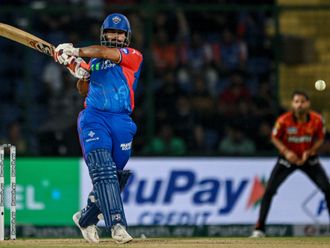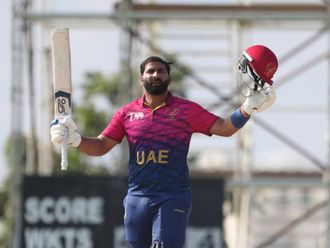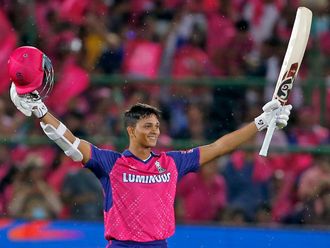Dubai: When India won the World Cup in 1983, they were a bunch least expected to win. From then on, the entire cricketing world has considered them as a team good enough to lift the World Cup. They regained the crown in style in 2011 in front of their home crowd and hence the expectations to defend their title in the very next edition are bound to be high.
Carrying hopes of winning the Cup again, in a country where conditions are different, is not an easy task. Though the team is led by the same captain in Mahendra Singh Dhoni, he is perceived no more as the man with the magic touch.
Having not won a single match on their tour of Australia so far, he no longer is the Captain Cool as he is known to be and who led India to ICC World Cup Twenty20 in 2007 and ICC Cricket World Cup 2011 triumphs. This World Cup will be the biggest test of Dhoni’s captaincy as well his ability to withstand the pressure of expectations and performance.
Supporters of the Indian team are optimistic of them regaining their form after the short break they are going through now. Many argue that India’s non-familiarity with the conditions in Australia and New Zealand will also have no impact as all other opponents too are not well versed with those conditions. In these circumstances, a winning start to the tournament is vital. If India are able to beat Pakistan in their first match and South Africa in their second, all doubts of their inability to adapt to conditions will be wiped off easily.
However, the question remains whether India have the squad with the ability to perform consistently till the end of the World Cup. Their most glaring weakness is their bowling attack. To make matters difficult, most wickets are likely to be batsmen-friendly, and hence this bowling strength is unlikely to be able to restrict teams with powerful batting line-ups.
Ishant Sharma, the main strike bowler. had to be replaced by Mohit Sharma on Saturday and inexperienced Stuart Binny now looks the best among pacers. Experienced spinners like Ravindra Jadeja and Ravichandran Ashwin haven’t been impressive of late to be considered as spinners capable of wrecking teams. In fact, their performance will depend a lot on the likelihood of wickets turning slow during the course of the tournament.
This brings us to the point whether the Indian batting is impressive enough to chase any total or even post a big one. A lot will depend on Virat Kohli’s form as opener; Shikhar Dhawan has been battling with weakness outside the off stump. Ajinkya Rahane and Ambati Rayudu’s forms will be vital. Rohit Sharma should not fail after one big knock; he must remain consistent. Suresh Raina must now step up and play the role that Yuvraj Singh played in the 2011 World Cup.
India are a team with the largest number of supporters, and hence must be able to withstand the criticisms and fight back in case they fail in the earlier rounds. Their last three first round matches are against weaker teams like the West Indies, Ireland and Zimbabwe, and hence their chances are higher to come up to the knock-out stages.
As former Indian skipper Rahul Dravid remarked, three good matches is what India need to win the World Cup (quarter-finals, semi-finals and final). The question to ponder is whether, in their current form, they will be able to conquer teams like Australia, New Zealand and South Africa - who look far stronger.












